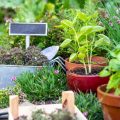1. Planning Your Perennial Paradise
Creating a beautiful, low-maintenance garden doesn’t have to cost a fortune. With a bit of planning, you can build a perennial garden that not only looks great year after year but also saves you money in the long run. Here’s how to get started on your budget-friendly gardening journey.
Start with a Garden Map
Before buying any plants or digging up your yard, take time to map out your garden space. Sketch a simple layout of your yard, noting areas that receive full sun, partial shade, and full shade throughout the day. This will help you choose the right plants for each spot, reducing the chances of plant failure and replacement costs later.
Sun and Shade Zones
| Light Condition | Daily Sunlight | Suggested Plant Types |
|---|---|---|
| Full Sun | 6+ hours | Lavender, Coneflower, Black-eyed Susan |
| Partial Shade | 3–6 hours | Astilbe, Coral Bells, Bleeding Heart |
| Full Shade | <3 hours | Hosta, Ferns, Lungwort |
Pick a Garden Theme That Fits Your Home
Selecting a cohesive theme can make your garden feel like an extension of your home’s personality. Whether it’s cottage-style charm with lots of color or a minimalist modern look with clean lines and greenery, choosing a theme helps guide your plant selection and decor choices. This keeps you from making impulse purchases that don’t fit in — saving money and creating visual harmony.
Popular Perennial Garden Themes
| Theme Style | Description | Ideal Plants |
|---|---|---|
| Cottage Garden | A relaxed mix of colors and textures with old-fashioned charm. | Daisies, Peonies, Daylilies |
| Modern Minimalist | Sleek design with neutral tones and structural plants. | Ornamental Grasses, Sedum, Echinacea |
| Native Plant Garden | Focuses on local flora to support wildlife and reduce maintenance. | Milkweed, Goldenrod, Joe-Pye Weed |
Think Long-Term to Save Money
The best part about perennials is that they come back year after year. When choosing plants, think about their growth habits and longevity. Some may spread naturally over time (like Black-eyed Susans), helping you fill out your garden without spending more later. Also consider dividing mature plants every few years to create new ones — for free!
Pro Tip:
Look for plant swaps in your community or check out local extension services — many offer free or low-cost perennials grown by master gardeners.
A little planning goes a long way when it comes to building a budget-friendly perennial garden. By mapping out your space, understanding sun and shade patterns, choosing a theme that fits your home’s style, and focusing on long-term savings through smart plant choices, you’ll be well on your way to creating a vibrant outdoor space that thrives season after season — without emptying your wallet.
2. Choosing Budget-Friendly Perennials
One of the best ways to keep your garden budget in check is by selecting perennial plants that are not only beautiful but also low-maintenance and long-lasting. Perennials come back year after year, which means you won’t need to replant each season—saving you both time and money in the long run.
Know Your USDA Hardiness Zone
Before picking out any perennials, its important to know your USDA hardiness zone. This helps you choose plants that will thrive in your specific climate without needing extra care or protection. You can easily look up your zone using your zip code on the USDA website or at local garden centers.
Top Budget-Friendly Perennials by Zone
Here are some hardy and affordable perennial options for different zones across the U.S. These plants are known for their resilience and minimal upkeep requirements, making them perfect for budget-conscious gardeners:
| USDA Zone | Perennial Options | Features |
|---|---|---|
| Zones 3-5 | Daylilies, Coneflowers, Black-eyed Susans | Cold-hardy, drought-tolerant, vibrant blooms |
| Zones 6-7 | Hostas, Sedum, Coreopsis | Shade-tolerant, low-maintenance, spreads easily |
| Zones 8-9 | Lantana, Salvia, Yarrow | Heat-tolerant, attracts pollinators, colorful flowers |
| Zone 10+ | Lavender, Blanket Flower, Mexican Heather | Drought-resistant, thrives in full sun, fragrant or long-blooming |
Tips for Finding Affordable Perennials
Shop Local Plant Sales and Swaps
Community plant swaps and local extension offices often host sales where you can get healthy plants at a fraction of nursery prices—or even free.
Buy Bare-Root Plants
Bare-root perennials are usually cheaper than potted ones and are available online or at garden centers early in the season. They may look like sticks at first, but with proper planting they flourish just as well.
Divide and Multiply
You don’t have to buy dozens of plants to fill your garden. Choose varieties like Hostas or Daylilies that can be divided every few years. This gives you more plants from the originals without spending more money.
Start Small and Be Patient
You don’t need to fill every space immediately. Start with a few strong performers that will spread over time. Many perennials grow larger each year and can eventually cover more ground naturally.
Bonus Tip: Look for Native Plants
Native perennials are adapted to your local climate and soil conditions, meaning they typically require less water, fertilizer, and care. Plus, they support local wildlife like bees and butterflies!
Selecting the right mix of tough yet attractive perennials suited to your region is one of the smartest moves you can make when building a cost-effective garden that lasts for years.
![]()
3. Smart Shopping Strategies
Creating a beautiful perennial garden on a budget is absolutely doable—if you know where and when to shop. By being strategic about where you buy your plants and gardening supplies, you can stretch your dollars without sacrificing quality or variety.
Find Deals at Local Nurseries
Independent nurseries often have seasonal sales, loyalty programs, or discounts for buying in bulk. Don’t be shy about asking staff when their next sale is or if they offer any deals for frequent shoppers. End-of-season sales, usually in late summer or early fall, are a great time to snag perennials at steep discounts.
Check Out Community Plant Swaps
Plant swaps are fun, social events where gardeners trade plants, seeds, and cuttings. These are often hosted by local gardening clubs, community centers, or even neighborhood Facebook groups. Not only are plant swaps a free way to expand your garden, but they’re also great for finding hardy plants that thrive in your area.
Clearance Racks: Hidden Treasures
Big box stores like Home Depot, Lowe’s, and Walmart often have clearance racks filled with “sad-looking” plants that just need a little TLC. With some water, sunlight, and love, many of these discounted perennials bounce back beautifully. Look for healthy roots and avoid plants with signs of disease or pests.
When and Where to Buy for Best Savings
Timing matters when it comes to garden shopping. Heres a quick guide:
| Time of Year | Best Places to Shop | What to Look For |
|---|---|---|
| Early Spring | Local nurseries, online retailers | Starter plants, bare-root perennials |
| Late Spring/Early Summer | Farmers markets, plant sales | Mature plants ready to bloom |
| Late Summer/Fall | Nurseries, big box stores | End-of-season clearance deals |
| Year-Round | Online plant swaps, local swap groups | Seeds, cuttings, divisions from other gardeners |
Bonus Tip: Use Social Media Marketplaces
Check Facebook Marketplace or local gardening groups for people giving away plants or selling them cheaply. Many gardeners divide perennials every year and are happy to share extras with others in the community.
The Bottom Line?
You don’t have to spend a fortune to build a thriving perennial garden. With smart shopping strategies and a little patience, you can fill your yard with lasting beauty—all while sticking to your budget.
4. DIY Soil Prep and Mulching
Creating a budget-friendly perennial garden starts from the ground up—literally. Prepping your own soil and using mulch effectively can save you money while helping your plants thrive. You don’t need expensive fertilizers or fancy tools. With a little effort and some natural materials, you can build healthy soil that supports strong, long-lasting plants.
Compost: Nature’s Free Fertilizer
Instead of buying bags of soil amendments, start a compost pile at home. Use kitchen scraps like fruit peels, coffee grounds, and eggshells, along with yard waste like leaves and grass clippings. Over time, these break down into nutrient-rich compost that improves your soil’s structure and fertility.
Simple Composting Tips:
- Use a mix of green (wet) and brown (dry) materials for balance.
- Turn the pile every couple of weeks to speed up decomposition.
- Avoid adding meat, dairy, or oily foods—they attract pests.
Natural Soil Amendments on a Budget
You can also enhance your soil with inexpensive or free natural amendments. These help improve drainage, increase nutrients, and balance pH levels. Here are some common options:
| Amendment | Benefit | Where to Find |
|---|---|---|
| Coffee Grounds | Add nitrogen and improve soil texture | Free from local coffee shops |
| Crushed Eggshells | Add calcium and reduce soil acidity | From your kitchen waste |
| Wood Ash | Add potassium and raise pH in acidic soils | From fireplace or fire pit |
| Manure (aged) | Boosts organic matter and nutrients | Local farms or garden centers |
The Magic of Mulch
Mulching is one of the easiest ways to save water, suppress weeds, and insulate plant roots—all while keeping costs low. Skip the pricey store-bought options by using natural mulches like straw, shredded leaves, or even newspaper.
Budget-Friendly Mulch Options:
- Shredded Leaves: Collect them in fall for free mulch.
- Pine Needles: Great for acid-loving plants like blueberries.
- Grass Clippings: Use dried clippings to avoid matting.
- Newspaper: Lay sheets under other mulch to block weeds.
How to Apply Mulch Properly:
- Clear weeds before applying mulch.
- Add a layer about 2–3 inches thick.
- Keep mulch a few inches away from plant stems to prevent rot.
A little DIY effort goes a long way in building a thriving perennial garden without spending much. By improving your soil naturally and mulching smartly, youre setting up your plants—and your wallet—for long-term success.
5. Propagating and Dividing for Free Plants
One of the easiest ways to grow your perennial garden without spending a dime is by multiplying the plants you already have. Plant propagation and division are simple, beginner-friendly techniques that can significantly expand your garden for free. You can also connect with fellow gardeners to swap plants, giving you even more variety without touching your wallet.
Propagating Perennials
Propagation means creating new plants from existing ones. Many perennials can be propagated through cuttings, layering, or seed collection. Here’s a quick breakdown of common methods:
| Propagation Method | Best For | How-To |
|---|---|---|
| Stem Cuttings | Sage, Lavender, Mint | Cut a healthy stem, remove lower leaves, place in water or soil until roots form. |
| Division | Hostas, Daylilies, Coneflowers | Dig up mature plant, gently separate root clumps, replant divisions. |
| Seed Collection | Echinacea, Black-eyed Susan | Collect dried seeds from flower heads and plant them the following season. |
| Layering | Creeping Thyme, Sedum | Bend a stem to the ground, cover with soil, and wait for roots to develop before cutting it free. |
Dividing Mature Plants
If you’ve got well-established perennials in your yard, chances are they’re ready to be divided. Not only does this give you more plants, but it also helps keep your originals healthy by preventing overcrowding. Early spring or fall is usually the best time to divide most perennials.
Signs It’s Time to Divide:
- Your plant has outgrown its space.
- The center of the plant looks dead or sparse.
Trade With Fellow Gardeners
You’d be surprised how many plant lovers are eager to swap! Whether it’s a neighbor down the street or someone in an online gardening group, trading is a fun and budget-friendly way to diversify your garden. Try checking out local Facebook gardening groups, community bulletin boards, or neighborhood apps like Nextdoor.
Tips for Successful Plant Swaps:
The more you learn about propagating and dividing perennials, the more confident you’ll become in growing a lush garden without spending extra money. Its all about working smarter with what you already have—and building connections along the way!


